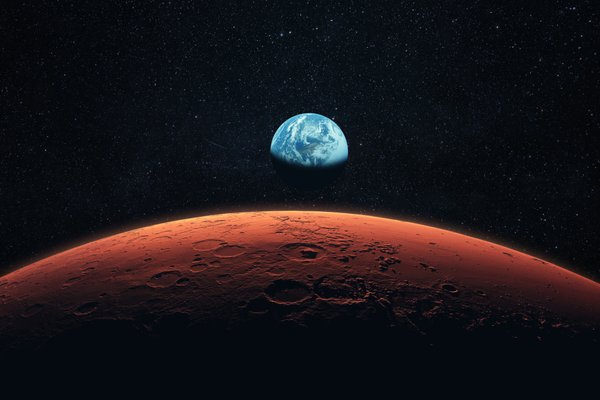Water is one of the essential things for the existence of life on Earth. On Mars, science has already discovered ice deposits at the poles. Now, a new accumulation of solid water has been found beneath the Red Planet's “equator” through recent research, which has already been published in the scientific journal Geophysical Research Letters.
The story is as follows: In 2007, researchers discovered a very strange deposit in the Medusa Formation – a rock formation close to the Martian equator. They couldn't determine exactly what was under those rocks, but they knew it wasn't other rocks. Radar signals indicated something less intense. However, it still could not be said that it was ice.
Now, nearly 20 years after the original research, MARSIS radar has been able to study this formation in more detail, and signs point to a massive ice sheet.
According to Dr. Thomas Watters, one of the study's authors, the signals match what would be expected in ice sheets. These marks are similar to those found at the polar caps of Mars, where science has already found water in a solid state.
Red sea on the red planet
Composition of Medusa fossils (Source: ESA via IFL Science)
Dr. Thomas Watters also claims that such ice deposits are much larger than researchers previously thought: up to 3.7 kilometers deep.
Data from the European Space Agency (ESA) indicate that there is so much ice in the Medusa Fossey formation that if it all melted, the Red Planet would be covered in water. The depth of flooding is expected to range between 1.5 to 2.7 metres, according to estimates. This is a volume of water equivalent to the size of the Red Sea here on Earth.
The Medusa Fossil Formation is thought to contain large layers of ice and dust, all covered by a hundreds-meter-long layer of dust or ash.
Now, scientists want to understand where all this ice came from, how it formed and what Mars looked like at the time. “If this is confirmed to be water ice, these giant deposits will change our understanding of the climate history of Mars,” said scientist Colin Wilson from the European Space Agency.
According to him, any ancient water deposits would be a “fantastic target for human or robotic exploration.” In short, the discovery of glacial deposits answered many questions, but raised many others, which science must investigate in the coming years.

“Hardcore beer fanatic. Falls down a lot. Professional coffee fan. Music ninja.”






More Stories
The law allows children and adolescents to visit parents in the hospital.
Scientists pave the way for the emergence of a new element in the periodic table | World and Science
Can dengue cause hair loss? Expert explains how the disease affects hair